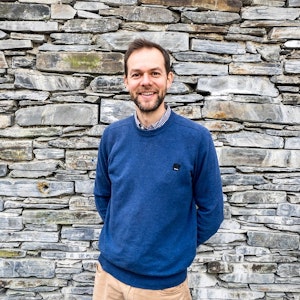
Tim Coleridge
Senior Lecturer and SA, SABE, SAP and GB Programme Leader
Working for eight years at Hopkins Architects, Tim has worked on a huge range of projects that tackled head-on the challenges of sustainable and low energy design. He is now the Programme Leader of the CAT MSc courses validated by the University of East London.
Tim is an Architect and Programme Leader of the Sustainability & Adaptation suite of programmes and also the MSc Sustainability in Energy Provision and Demand Management. The role of the Programme Leader is primarily to foster the conditions and practice that promote high standards of academic quality and maintain these through the effective management of the programme. Tim is passionate about sustainable design and adaptation in the built environment, regularly lecturing and leading seminars and practical workshops in low-impact development, bio-based construction materials, low and zero carbon buildings, and closing the ‘performance gap’.
Prior to joining CAT, Tim spent eight years in practice at Hopkins Architects in London where he led design teams working on projects ranging widely in programme and scale. Each of these projects tackled head-on in different, but equally ambitious, ways the real-world challenges of sustainable and low energy design.
After qualifying as a BREEAM Assessor in 2007, Tim took on the role of Hopkins’ in-house Sustainability Specialist, providing specific environmental design input across the office and advising teams working on projects aiming for BREEAM certification. Tim was also a Scheme Coordinator and Mentor of Hopkins Architects RIBA Part III candidate professional studies support scheme.
Tim previously worked for Foster & Partners, London, for two years, and for a sole practitioner in Gloucestershire.
Tim studied at The Bartlett School of Architecture, UCL, and Oxford Brookes University, and before joining the MSc staff at CAT he taught at UCL, The University of Nottingham and Kingston University. During his time in London, Tim was also a tutor on the annual Junior Open House programme, which brings children aged 8-16 into contact with key pieces of architecture through building exploration and classroom design workshops.
Tim’s professional training, practice and teaching have given him a wide range of architectural experience, access to a wealth of knowledge and ideas, and valuable contacts, all particularly in the area of sustainable design.
Qualifications
The Bartlett School of Architecture, UCL
Professional Practice and Management in Architecture (ARB/RIBA Part III).
The Bartlett School of Architecture, UCL.
Graduate Diploma in Architecture (RIBA Part II).
Oxford Brookes University.
BA (Honours) Architectural Studies (RIBA Part I).
Professional memberships.
Architects Registration Board (ARB) membership number 069270K.
Royal Institute of British Architects (RIBA) membership number 11195934.
Teaching activities
Lecturer, seminar group tutor and dissertation supervisor.
Programme development: Tim co-developed and co-wrote the integrated suite of MSc.
Sustainability and Adaptation programmes (SA, SABE & SAP).
Module Leader: Tim leads the ‘core’ ‘Adaptation and Sustainability Concepts and Planning’, ‘Applied Project’ and ‘Practice-based project’ modules, and co-leads the ‘Energy Flows in Buildings, Part 1 & 2’ and ‘Sustainable materials’ modules.
Lecturer: Tim regularly lectures and leads seminars and practical workshops on a range of topics including: adaptation and sustainability of buildings; thermal comfort; climatic influences on the design of buildings; design for deconstruction; lighting; sustainable communities; domestic retrofit; discourse in sustainable architecture; building performance assessment and evaluation; timber construction; and the RIBA Plan of Work.
Research interests and expertise
Architecture, energy flows in buildings, building performance evaluation and assessment (including post occupancy evaluation), environmental impacts of buildings and construction, design for deconstruction (DFD), low-impact and bio-based building materials (with particularly focus on timber), retrofit, vernacular and listed buildings.
Socio-technical research methods, including experimental monitoring and simulation, case studies, interviews, focus groups and questionnaires.
Publications
Coleridge, T. (2014) ‘Pandering to bamboo: on skyscrapers made out of wood’, The Architectural Review, CCXXXVI(1412), pp. 28–32.
Huh, R. and Coleridge, T. (2017) ‘Performance Analysis of External Shading Devices: A Case Study of Office Building Typology in Cape Town, South Africa’, in Design to Thrive: Passive and Low-Energy Architecture. PLEA2017, Edinburgh.
Noori, Z. G. and Coleridge, T. (2014) ‘Do the new sustainable schools in the UK achieve optimum lighting design? Hatfield Community Free School (HCFS) A case study’, in MC2014. Masters Conference People and Buildings, Sir John Cass Faculty Of Art, Architecture And Design at London Metropolitan University. Available at: http://nceub.org.uk/ocs/index.php/mc/MC2014/paper/view/9
